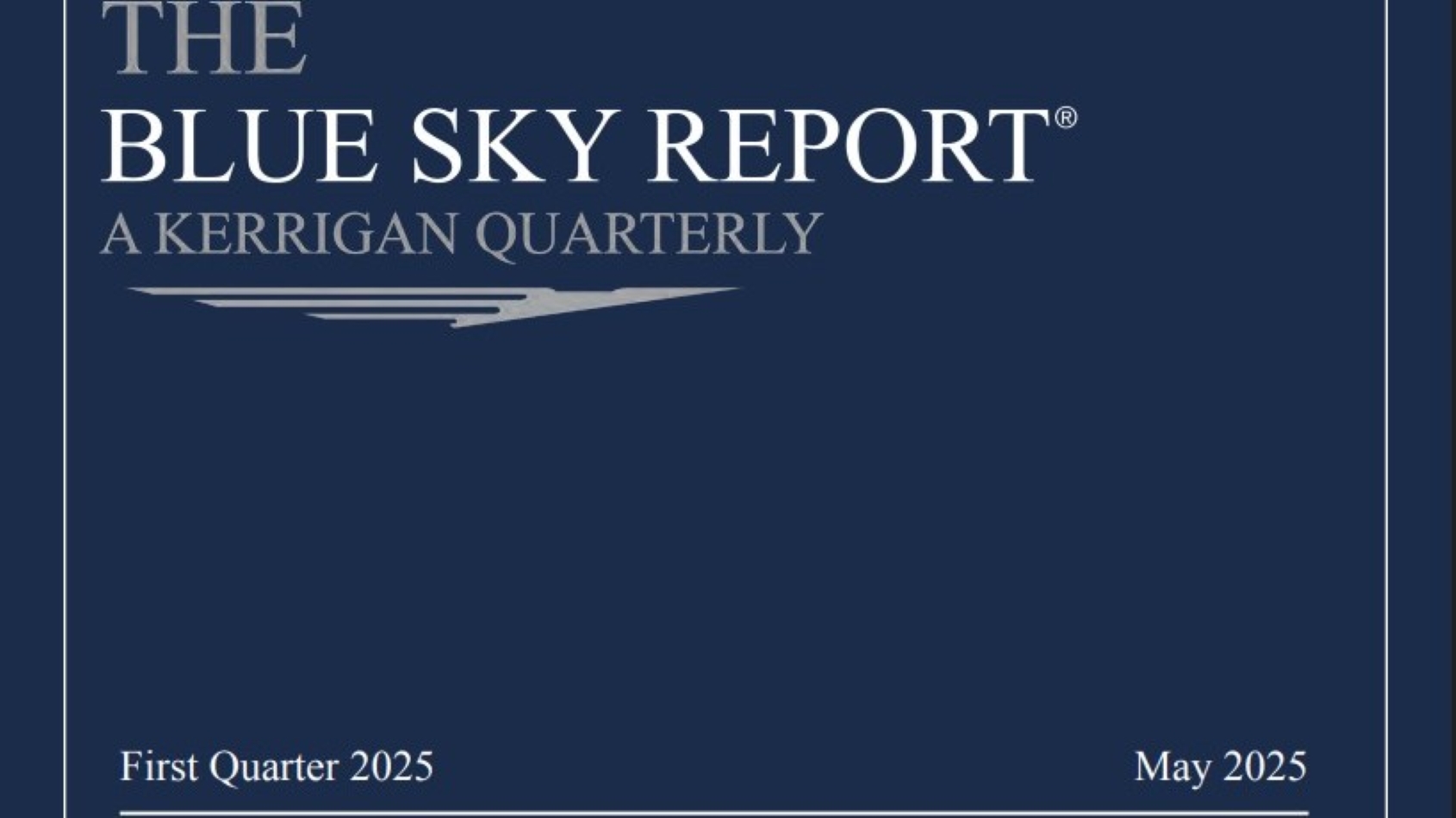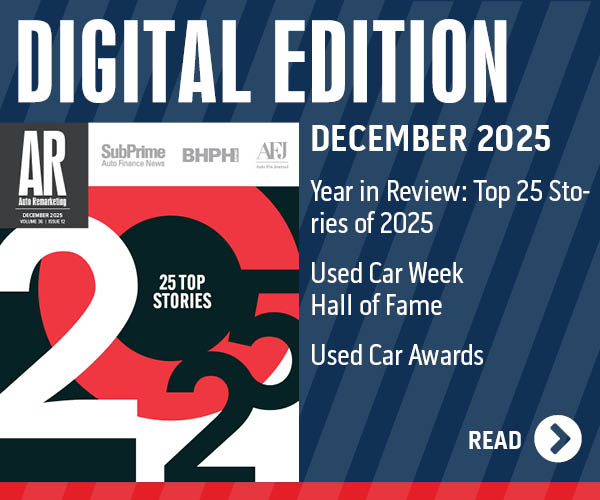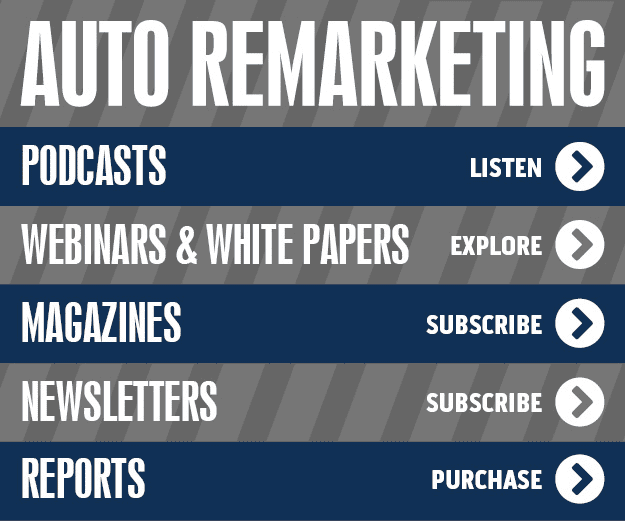Report: Tariffs cause slowdown in Q1 dealership M&A, but market still ‘historically strong’

Image courtesy of Kerrigan Advisors.
By subscribing, you agree to receive communications from Auto Remarketing and our partners in accordance with our Privacy Policy. We may share your information with select partners and sponsors who may contact you about their products and services. You may unsubscribe at any time.
The auto dealership buy/sell market has slowed in the wake of President Trump’s tariffs, with the resulting geopolitical uncertainty and financial market volatility leading to a cautious approach, according to Kerrigan Advisors’ Blue Sky Report for the first quarter of 2025.
The report found buy/sell activity in Q1 dropped 14% year-over-year, with 94 transactions closed compared to 109 in Q1 2024. The number of multi-dealership transactions dropped to 20, the fewest since 2015, while single-point transactions made up 79% of all dealership sales, up from 68% in 2023.
Still, Kerrigan Advisors said, the market remains “historically strong” and is on pace to total nearly 400 transactions for the year, well above the pre-pandemic average.
The report noted auto dealerships reported their first quarterly earnings increase since 2022, with the seasonally adjusted annualized rate of sales up while inventory remained tight, with created “sustainably high gross margins,” Kerrigan Advisors said.
“Economic uncertainty has had some impact on the buy/sell market in the first quarter of 2025, but its fundamentals remain strong,” Kerrigan Advisors founder and managing director Erin Kerrigan said, “and 2025 is shaping up to be another solid year for transactions.
“With dealership earnings on the rise, record buyer liquidity and a steady flow of single-store sellers coming to market, we predict activity will accelerate in the second half of 2025 and valuations will remain strong — particularly in high-growth regions like the South, where premiums are being paid because demand continues to outpace supply.”
Subscribe to Auto Remarketing to stay informed and stay ahead.
By subscribing, you agree to receive communications from Auto Remarketing and our partners in accordance with our Privacy Policy. We may share your information with select partners and sponsors who may contact you about their products and services. You may unsubscribe at any time.
That surge in M&A might have already begun, as a number of transactions have been reported since the beginning of Q2 in April involving major dealer groups such as AutoNation, Hendrick Automotive Group, Zeigler Auto Group and Group 1 Automotive, among others.
Even with the Q1 M&A slowdown, average public dealership earnings rose year-over-year for the first time since 2022, from $960,000 in Q1 2024 to $1.03 million this year. The report said that increase was the product of stable gross profit per vehicle, a surge in new vehicle sales and growth in the parts and service business.
Kerrigan Advisors said its recent surveys of OEMs and dealers showed rising confidence from groups that earnings are stabilizing, optimism that stems from the expectation that OEMs, rather than dealers or consumers, will likely bear the brunt of any tariff expense.
The report said OEMs are well positioned to do so as their gross margins are significantly higher than dealers and most OEMs are not willing to lose hard-fought market share in the competitive U.S. auto sector.
“Dealerships continue to demonstrate remarkable resilience, with strong vehicle margins and stable demand underpinning earnings growth,” Kerrigan said. “This performance, especially in a volatile macro environment, reinforces why dealership buyers remain confident in the long-term fundamentals of auto retail. Most expect the costs of tariffs will primarily be borne by the OEM and lower supply could in fact result in higher profits, much like the situation during the pandemic.”
Following the Trump Administration’s announcement of auto tariffs, the Kerrigan Index of the seven publicly traded auto retailers fell 21% by mid-April and pushed market volatility up.
In response, Kerrigan Advisors said, the public dealer groups shifted their capital allocation strategies, directing nearly half of their available capital toward stock buybacks. U.S. dealership acquisition spending plummeted to just $154 million, a huge drop from $1.19 billion in Q1 2024, fueling the buy/sell slowdown in Q1
Even so, Asbury Automotive announced the $1.4 billion acquisition of Boston-based The Herb Chambers Companies, a deal expected to close later in 2025, showing megadeals are still happening and the industry consolidation trend is uninterrupted by tariffs.
“If the Trump administration proceeds with broad-based auto tariffs, OEMs, rather than dealers, will likely absorb most of the cost,” Kerrigan Advisors managing director Ryan Kerrigan said. “The strategic industry consolidators know this and are taking a long-term view when seeking prized dealership assets.
“We do not expect the final tariff policy to meaningfully impact 2025’s buy/sell activity, though we will see some changes in franchise valuations with certain winners and losers depending on OEMs’ U.S. manufacturing capabilities and financial capacity to effectively react.”
The report pointed out three trends in Q1 that could impact the retail market going forward: accelerated industry consolidation bringing more single-store dealers to market, strong first-quarter earnings boosting consolidators’ growth plans despite the tariffs, and OEMs seeking fewer but larger dealers in their networks.
Kerrigan Advisors noted the top 150 dealer groups now generating a third of industry revenue — up 10% from the previous year — leaving smaller dealers are struggling to compete as OEM demands and tariff exposure increase operational risk. Facility upgrades, EV infrastructure, and rising capital costs are pushing more owners to consider selling.
The Kerrigan OEM Survey found, 92% of OEMs plan to maintain or increase facility requirements in the next five years.
Buyer demand for single stores remains strong, particularly among regional consolidators seeking to build scale in major metro areas.
That survey also showed one-third of OEM executives said they plan to reduce dealer count over the next five years, and nearly 30% expect to exercise their right of first refusal on at least a quarter of transactions. As OEMs reshape their dealer footprints, consolidation is likely to accelerate, Kerrigan said.
Should tariffs remain in place at elevated levels, Kerrigan Advisors anticipates a widening divide in franchise valuations, with OEMs with substantial U.S. manufacturing capabilities, such as General Motors, Ford, Stellantis, Toyota and Honda well positioned given their lower import exposure and financial strength.
Meanwhile, franchises tied to OEMs with limited U.S. production and weaker balance sheets could face downward pressure on valuations if tariffs become permanent. The exception is well-capitalized import luxury franchises such as BMW, Lexus, Mercedes, Porsche and Jaguar Land Rover, which can manage through higher tariffs thanks to higher margins that allow them to absorb more of the tariff expense, and the strength of U.S. luxury consumers.
“The buy/sell market is becoming more polarized between high and low demand franchises,” Ryan Kerrigan said. “This situation will likely become even more exacerbated when tariffs are finalized, with certain franchises better positioned than others to absorb the expense.
“Top consolidators are doubling down on the strongest franchises and geographies. With earnings rebounding and the policy environment evolving, we anticipate a reacceleration of buy/sell activity in the second half of 2025, especially if tariffs are reduced.”
Other findings from the Blue Sky Report include:
- Gross profit per new vehicle stabilized in the first quarter of 2025 at $3,478, down just 2.5% from the prior two-quarter average of $3,568.
- Between February and March of 2025, days’ supply for every franchise in the U.S. declined an average of 21%.
- The U.S. public dealer groups had a blue sky multiple of 6.1x in the first quarter of 2025, down 21% from the prior quarter’s blue sky multiple of 7.7x.
A preview of the report can be downloaded here. Click here to subscribe for the full report


